Introduction:
Human evolution is an awe-inspiring journey that unravels the remarkable story of our species, Homo sapiens, and its origins. It is a narrative that spans millions of years, connecting us to our ancient ancestors and illuminating the remarkable adaptability and resilience of the human species. Understanding human evolution not only sheds light on our past but also provides profound insights into our present and future. In this article, we embark on a captivating exploration of this extraordinary journey, tracing our path through time.
Human evolution is the story of how our species emerged and evolved from early hominids, distant relatives of modern humans, to the complex beings we are today. It is a tale that encompasses physical changes, cognitive developments, cultural advancements, and our unique ability to thrive in diverse environments. By exploring the origins and progression of our species, we gain a deeper understanding of our place in the natural world and the intricate tapestry of life on Earth.
Throughout the course of human evolution, numerous pivotal moments and transformative stages have shaped our species. From the emergence of early hominids to the mastery of fire, the development of toolmaking skills, and the evolution of complex societies, each stage has contributed to the incredible journey of Homo sapiens.
As we delve into the chapters of human evolution, we uncover the rich tapestry of our ancestors and the remarkable adaptations that allowed them to survive and thrive in changing environments. We witness the emergence of bipedalism, the ability to walk on two legs, which marked a significant milestone in our evolutionary history. We explore the development of toolmaking skills, which empowered our ancestors to manipulate their surroundings and secure their place in the natural world. We marvel at the expansion and colonization of different regions by early humans, a testament to their resourcefulness and resilience.
Beyond physical changes, human evolution encompasses the development of cognitive abilities, language, and social structures. These advancements have shaped our capacity to communicate, cooperate, and build intricate societies. The ability to think symbolically, reason, and plan for the future has set our species apart and fueled our progress as a civilization.
In this journey through time, we also consider the profound impact of environmental factors on human evolution. Climate change, dietary adaptations, and the challenges posed by disease have shaped our genetic makeup and influenced the trajectory of our species. As we adapt to our surroundings, we leave traces of our evolutionary history in our DNA, reflecting the dynamic interplay between our genes and the environment.
The study of human evolution is not merely an intellectual pursuit; it has practical implications for understanding our health, development, and potential future changes. By unraveling the mysteries of our evolutionary past, we gain valuable insights into human variation, genetic diversity, and the factors that contribute to our well-being.
As we embark on this journey through the chapters of human evolution, we invite you to join us in exploring the remarkable story of our species. Together, we will unlock the secrets of our ancestors, delve into the mysteries of our evolutionary heritage, and gain a deeper appreciation for the intricate web of life that connects us all.
By understanding our evolutionary past, we can navigate the challenges of the present and shape a future that honors our shared human journey. So, let us embark on this captivating exploration, tracing the footsteps of our ancestors and celebrating the incredible story of human evolution.
Prologue: A Glimpse into the Prehistoric World
In the vast timeline of Earth's history, long before humans walked the planet, there existed a world teeming with fascinating forms of life. This prologue takes us back to those ancient times, providing a glimpse into the prehistoric world that set the stage for the emergence of humanity.
During this era, the Earth was a vastly different place. Dense jungles, towering mountains, and expansive oceans formed a breathtaking tapestry of diverse landscapes. The atmosphere was rich with oxygen, and the climate fluctuated between periods of warmth and cold. It was in this primordial environment that life first took root.
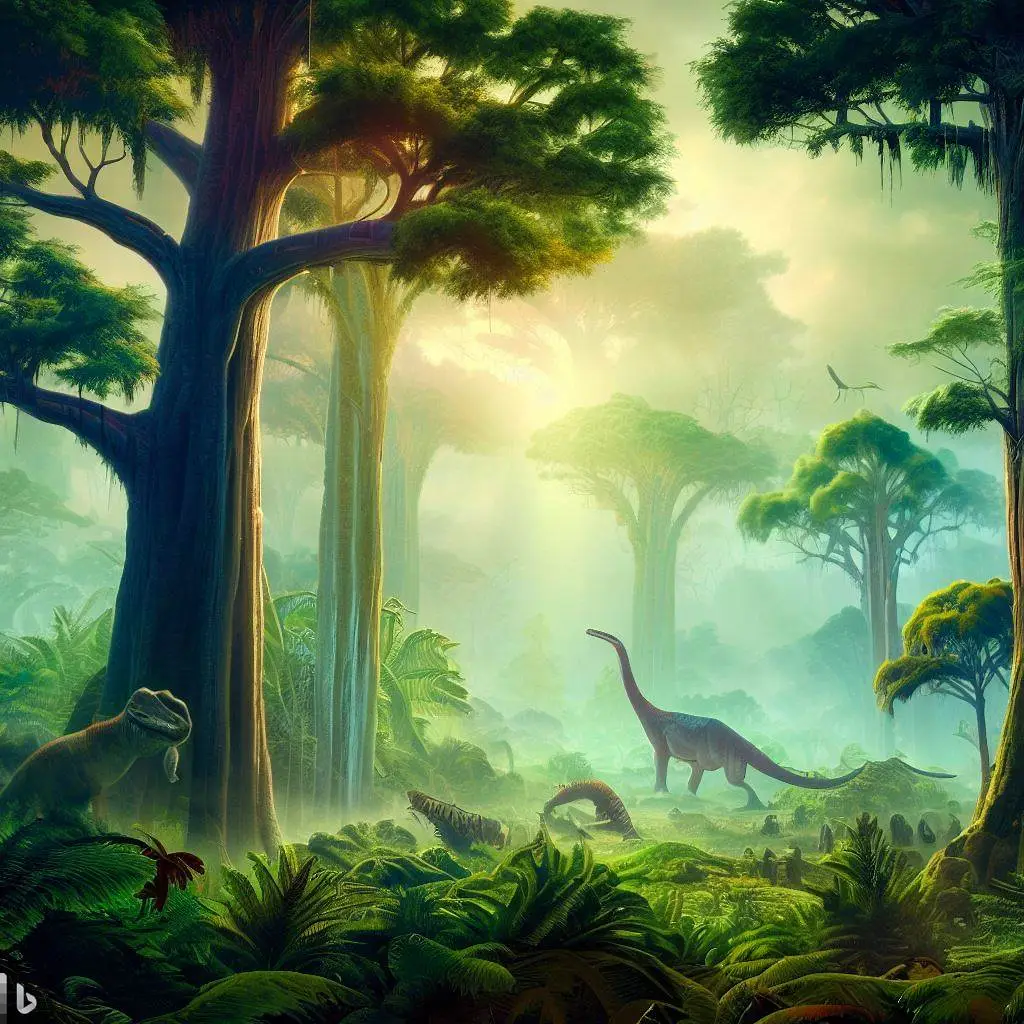
An image showcasing the lush prehistoric landscapes with towering trees, lush vegetation, and roaming dinosaurs, illustrating the diverse and awe-inspiring world of the past.
Amidst this tapestry of life, a group of early hominids, our distant ancestors, began to evolve. These hominids were part of a lineage that would eventually lead to the emergence of modern humans. While they may appear primitive to us now, their existence marked a crucial step in the unfolding story of human evolution.
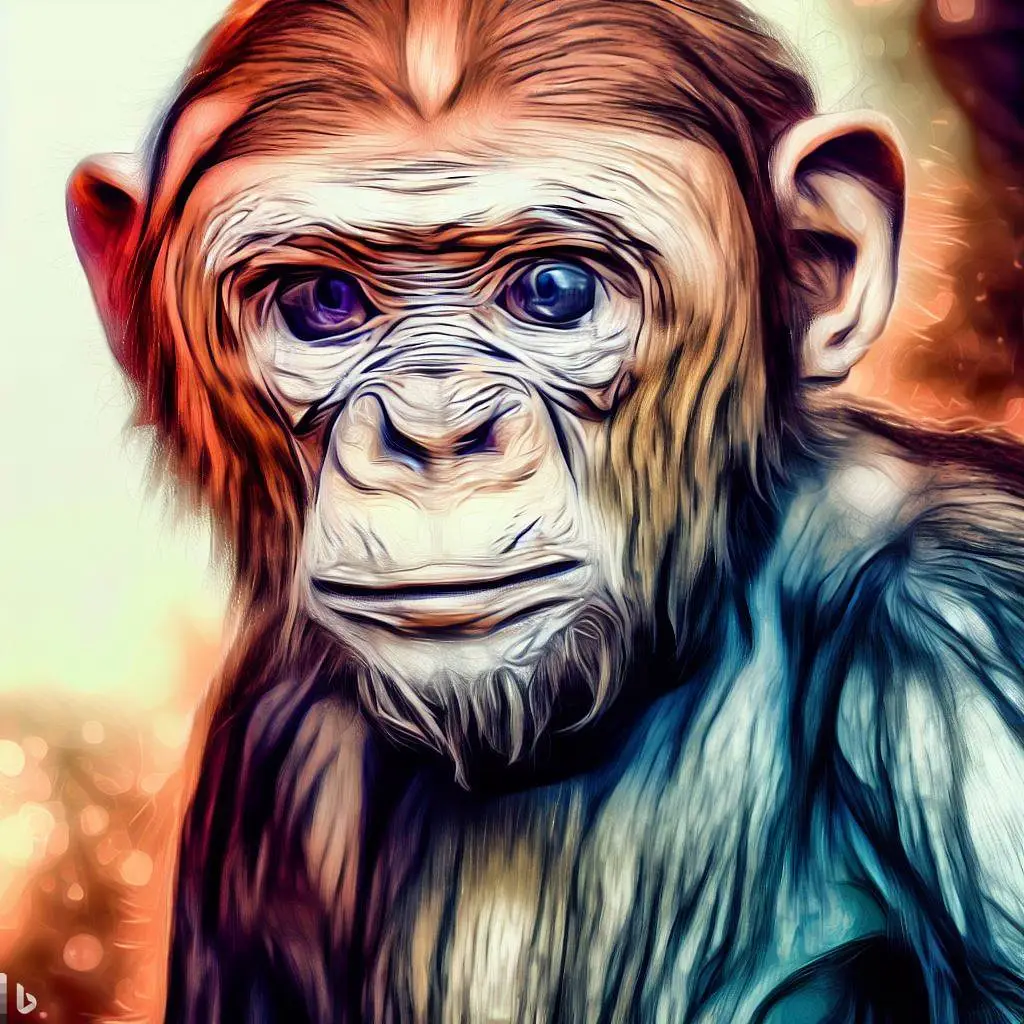
An artistic rendering or illustration of Australopithecus, one of the earliest hominid species, displaying their unique physical features such as a combination of ape-like and human-like traits, showcasing the transition from ape ancestors to early humans.
Australopithecus, one of the most well-known early hominids, inhabited the Earth approximately 4 to 2 million years ago. They were bipedal, meaning they walked on two legs, which was a significant adaptation that allowed them to navigate their environment more efficiently. However, their brains were still relatively small, and their behavior was more akin to that of modern primates.
These early hominids lived in diverse habitats, ranging from woodlands to grasslands. They were primarily herbivorous, relying on plant-based foods for sustenance. Their social structures were likely small and simple, with groups consisting of several individuals.
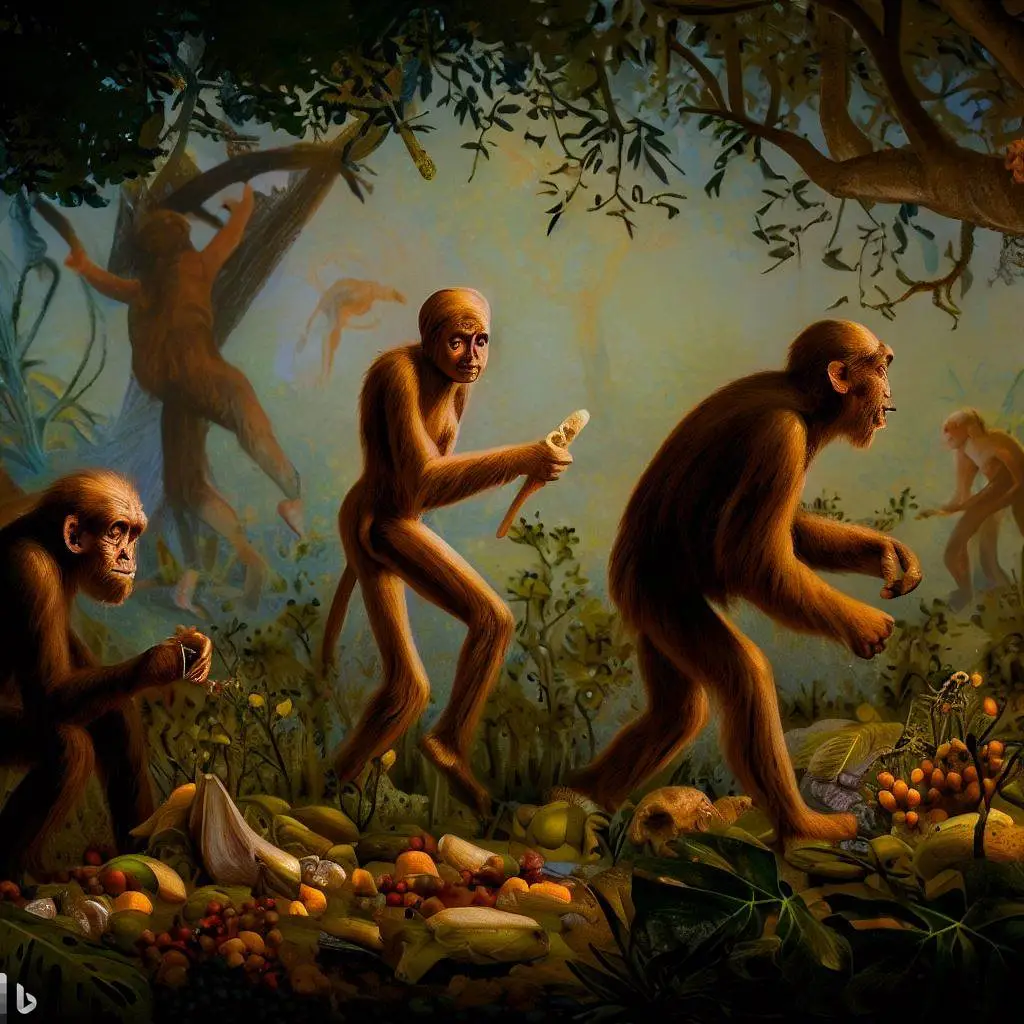
An image depicting Australopithecus individuals in their natural habitat, foraging for fruits and plants, displaying their bipedal locomotion and simple social interactions.
As time passed, these early hominids continued to evolve, leading to the emergence of new species. Each iteration brought about unique adaptations and advancements, gradually paving the way for the development of our own species, Homo sapiens.
By exploring the prehistoric world and the early hominids that inhabited it, we gain a deeper appreciation for our shared ancestry and the incredible journey that has led us to the present day.
Stage 1: Australopithecus - Our Earliest Ancestors
In the early stages of human evolution, Australopithecus played a pivotal role as our earliest known ancestors. These remarkable beings walked the Earth approximately 4 to 2 million years ago, leaving behind valuable clues to our evolutionary past.
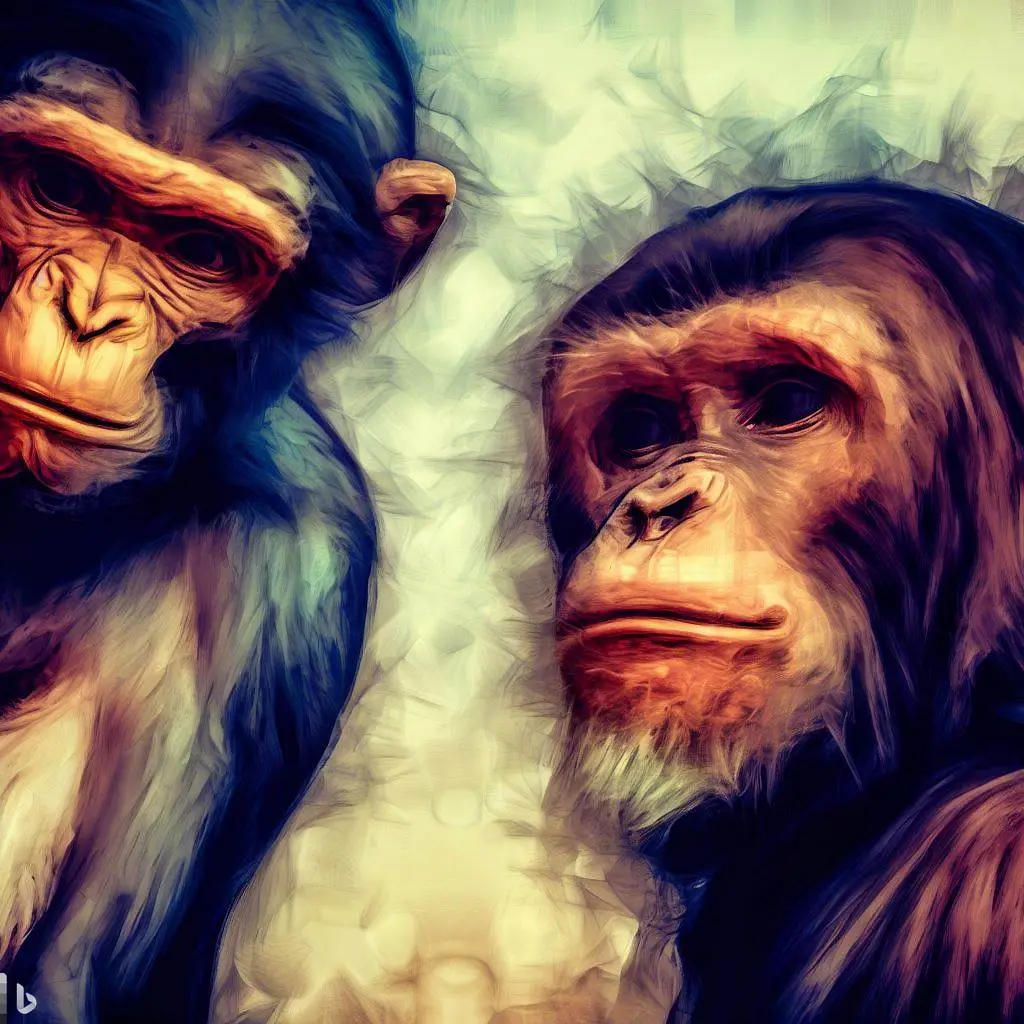
An artistic rendering or illustration of Australopithecus individuals, showcasing their distinctive physical features and characteristics.
Australopithecus possessed a unique combination of ape-like and human-like traits. They were bipedal, meaning they walked upright on two legs, which was a significant development that allowed for efficient movement and the ability to explore new environments. However, their brain size was relatively small compared to modern humans, indicating limited cognitive abilities.
These early hominids inhabited diverse habitats, including woodlands, savannahs, and grasslands. They were adept at climbing trees, a skill inherited from their primate ancestors, which provided them with safety, access to food sources, and a vantage point to survey their surroundings.
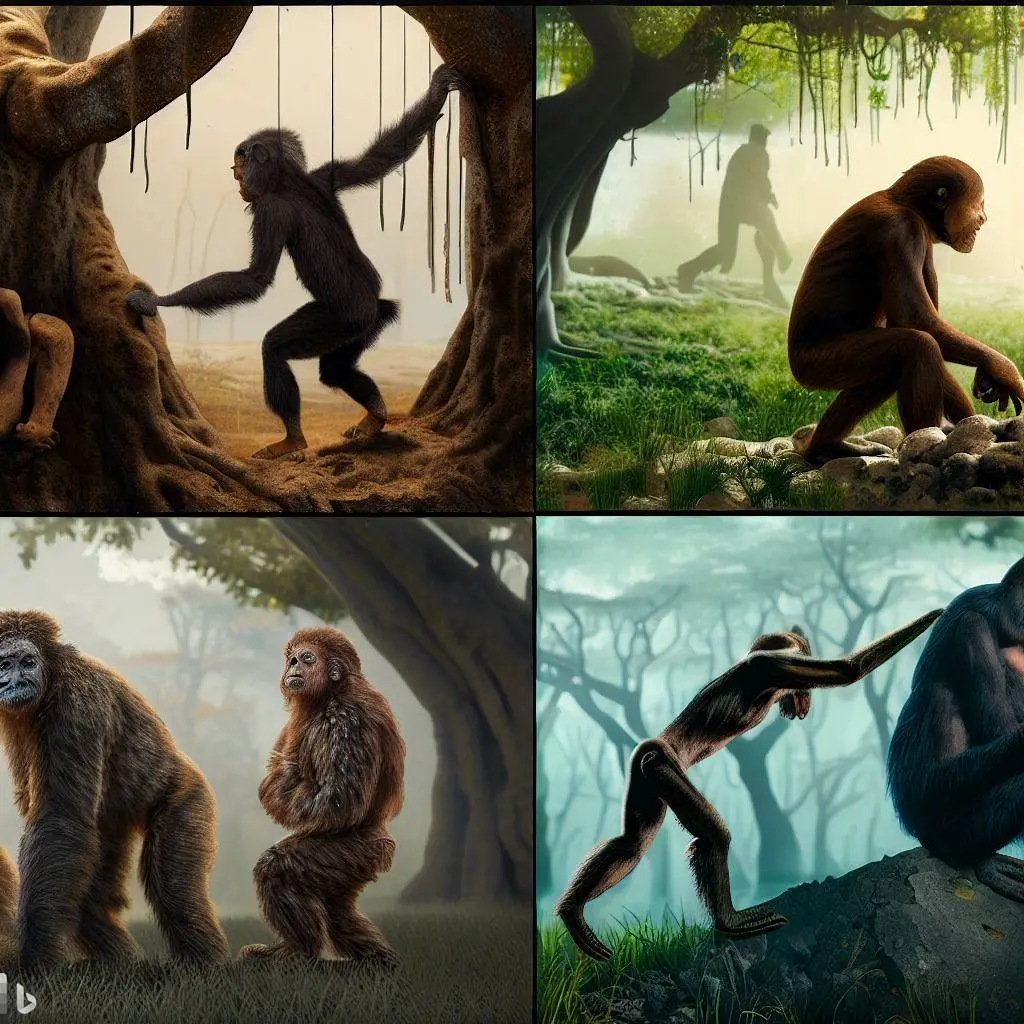
An image showcasing Australopithecus individuals in various environments, including both tree-dwelling and ground-dwelling scenarios, highlighting their adaptability and versatility.
Australopithecus primarily subsisted on a vegetarian diet, consuming fruits, leaves, seeds, and other plant matter. Their teeth and jaws were adapted for grinding and processing plant material, indicating a specialized diet.
Socially, Australopithecus likely lived in small groups or communities, engaging in basic forms of communication and cooperation. Their social structure provided protection, facilitated shared parenting responsibilities, and allowed for the exchange of knowledge and skills.
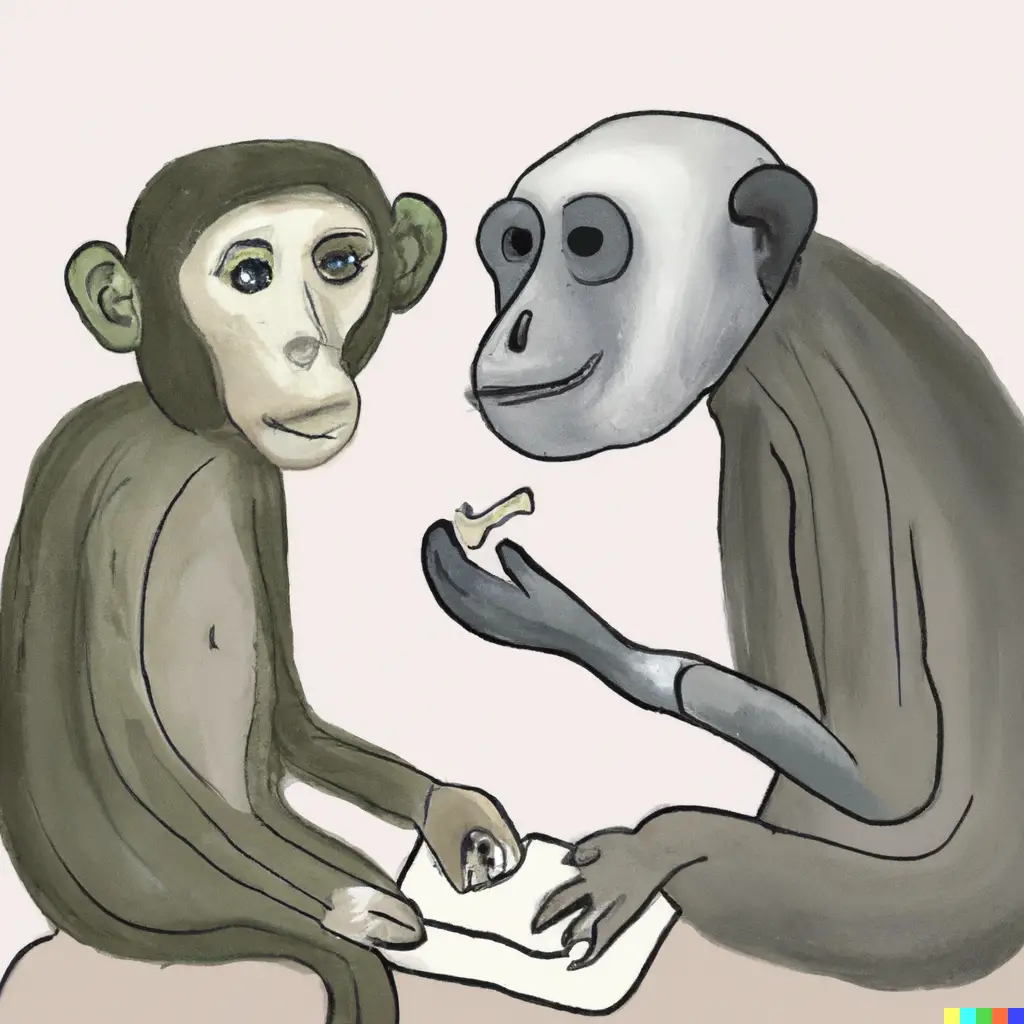
An image illustrating Australopithecus individuals in a social setting, engaging in activities such as grooming, sharing food, and communicating through simple gestures or vocalizations.
While Australopithecus may seem primitive compared to modern humans, their existence was a crucial step in the story of human evolution. It was during this stage that our ancestors first exhibited bipedal locomotion, setting the stage for further advancements in our lineage.
The Australopithecus stage serves as a testament to the remarkable adaptability and resilience of our early ancestors. Their ability to navigate diverse environments, utilize available resources, and form social bonds laid the foundation for the subsequent stages of human evolution.
By studying Australopithecus, we gain invaluable insights into the origins of our species and the gradual development of traits that distinguish us as humans. Their legacy lives on in our DNA, serving as a reminder of the incredible journey that has led us to the present day.
Stage 2: Homo habilis - Masters of Toolmaking
As human evolution progressed, a new chapter unfolded with the emergence of Homo habilis, a species that lived approximately 2.4 to 1.4 million years ago. Homo habilis, meaning "handy man," was aptly named for their remarkable ability to create and utilize tools, marking a significant milestone in our evolutionary journey.
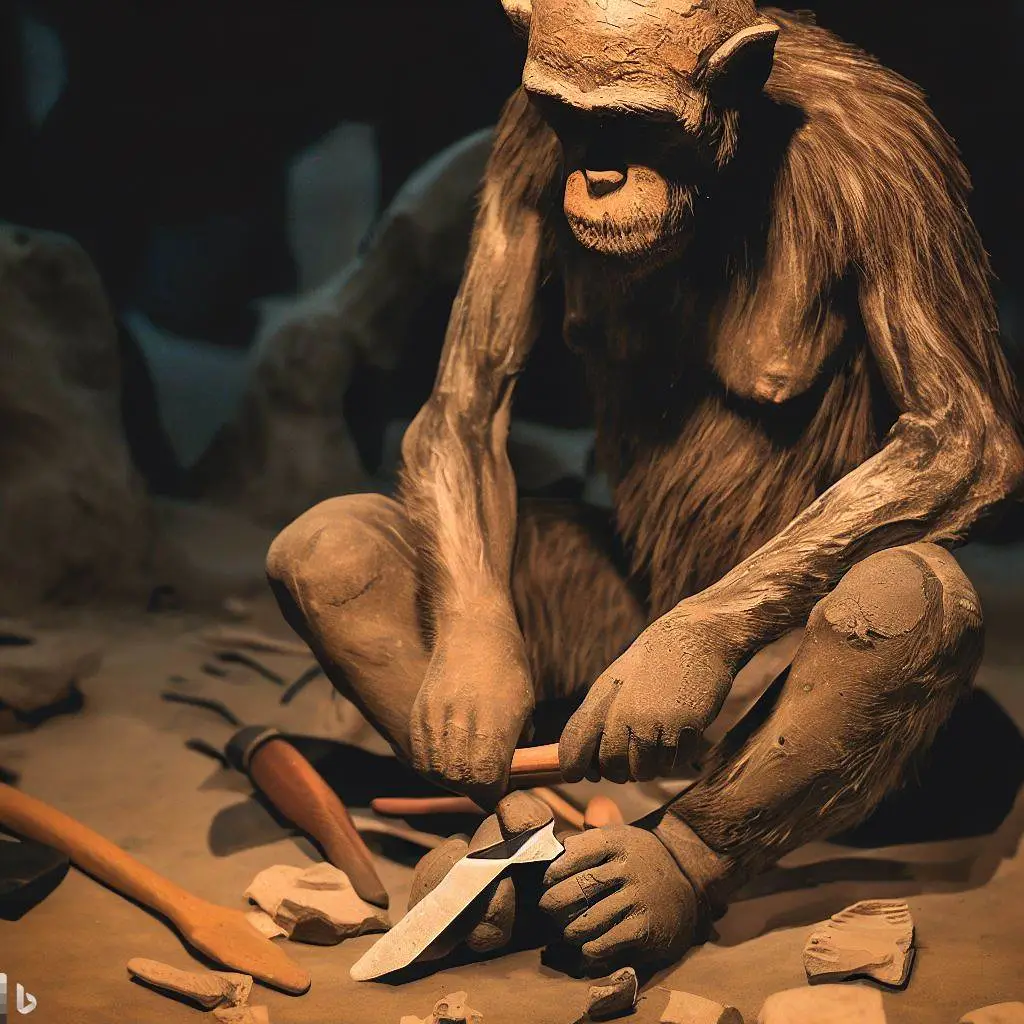
An illustration or depiction of Homo habilis individuals engaged in toolmaking activities, showcasing their dexterity and craftsmanship.
One of the defining characteristics of Homo habilis was their ingenuity in tool production. They crafted tools primarily from stone, fashioning sharp-edged flakes and cores through a technique known as flintknapping. These tools served various purposes, such as cutting meat, processing plants, and potentially even defending against predators.
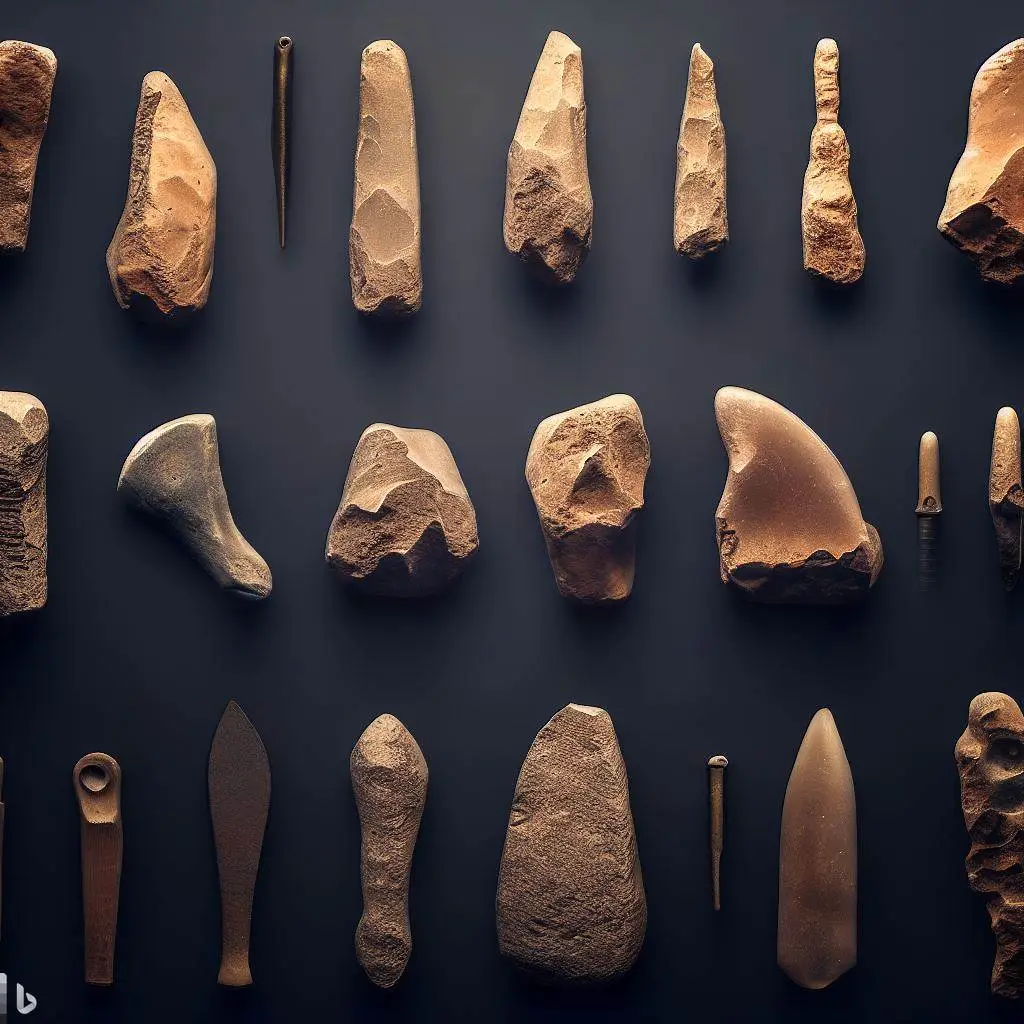
An image showcasing different types of stone tools created by Homo habilis, highlighting their functionality and versatility.
The mastery of toolmaking was a transformative development for Homo habilis. It allowed them to overcome physical limitations, enhance their hunting and gathering capabilities, and adapt more efficiently to their environment. Tools acted as extensions of their hands, providing an edge in survival and resource acquisition.
Homo habilis inhabited a range of habitats, including woodlands, grasslands, and even near water sources. This adaptability and flexibility in their living arrangements contributed to their success as a species.
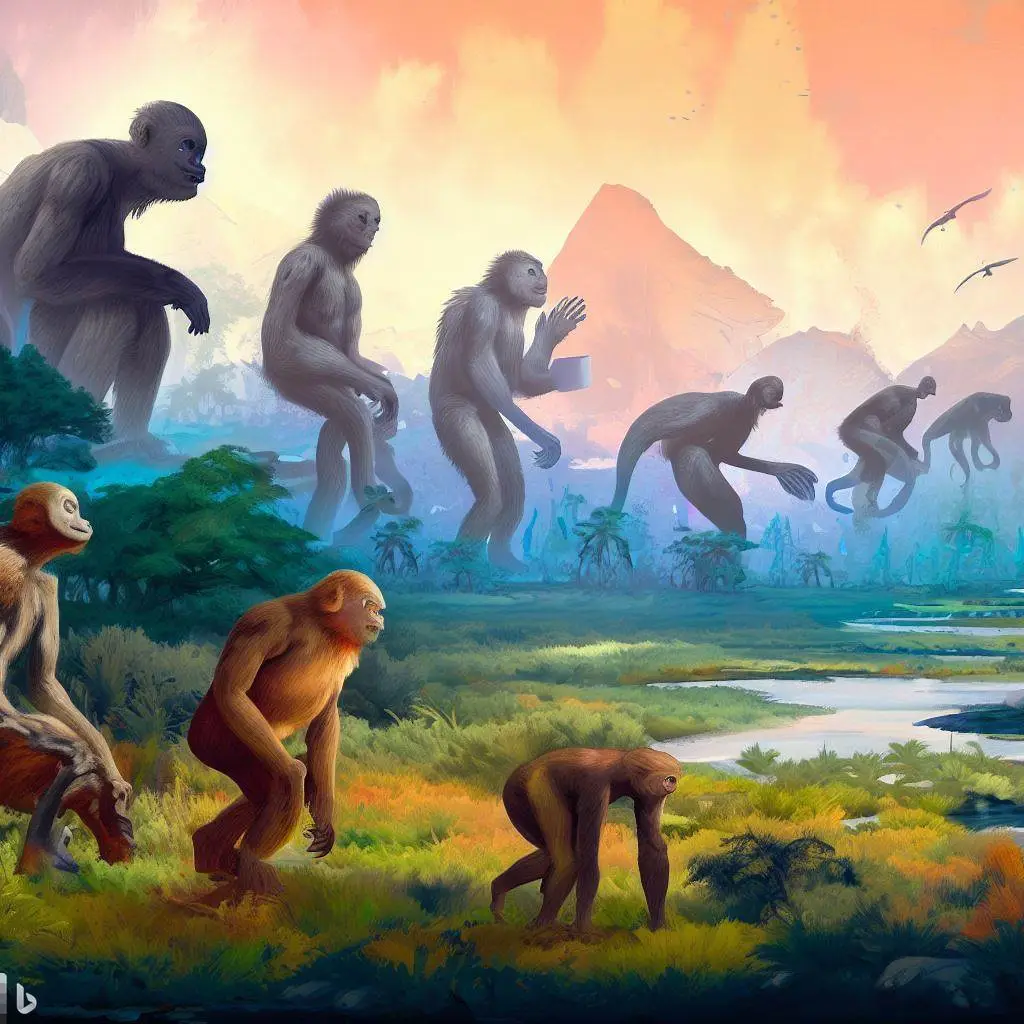
An artistic representation of Homo habilis individuals in diverse environments, such as forested areas, open plains, and near rivers or lakes, showcasing their ability to thrive in various ecosystems.
In terms of physical characteristics, Homo habilis displayed a significant increase in brain size compared to their Australopithecus ancestors. Although their brains were still relatively small compared to modern humans, this expansion marked the beginning of an evolutionary trend toward greater cognitive abilities.
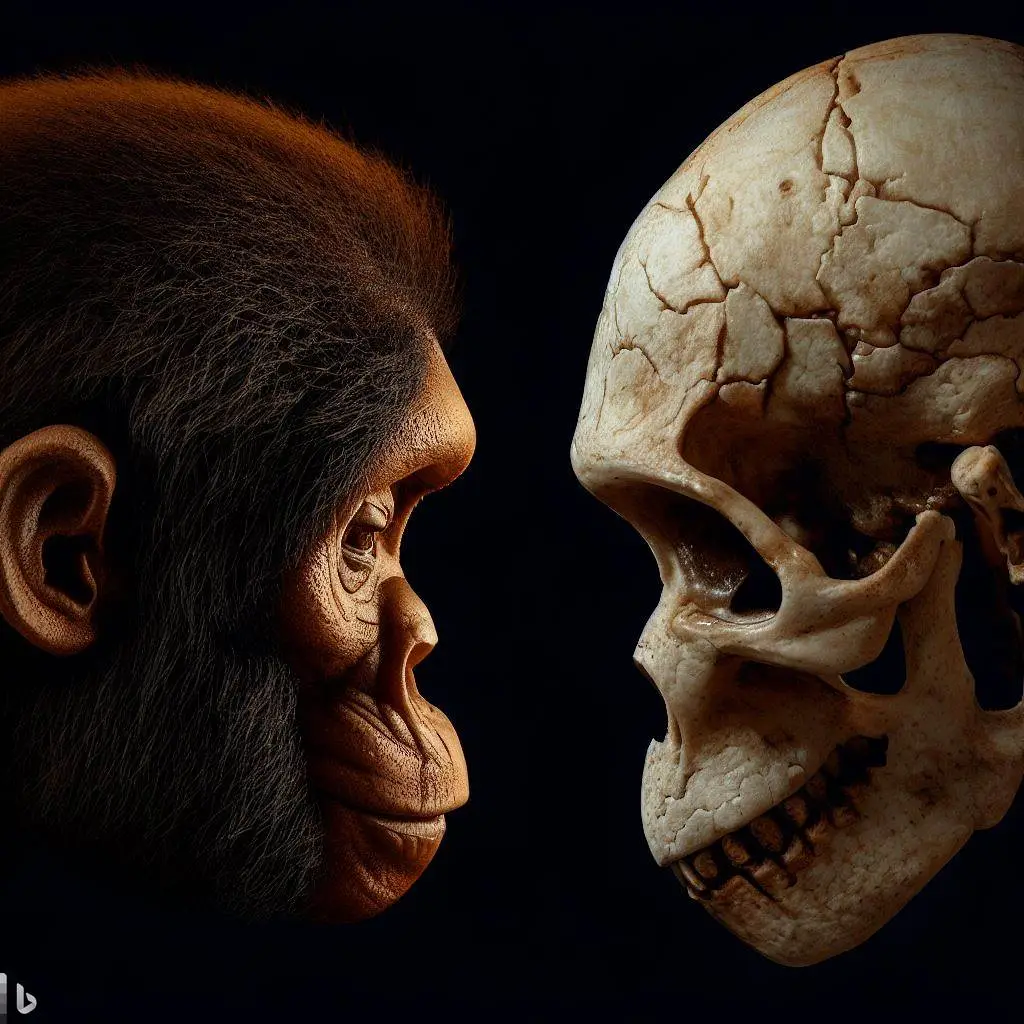
An image comparing the skull of Homo habilis with that of Australopithecus, highlighting the differences in brain size and cranial features.
While Homo habilis exhibited progress in toolmaking and brain development, they likely maintained a relatively simple social structure. It is believed that they lived in small groups or bands, cooperating for survival, protection, and resource sharing.
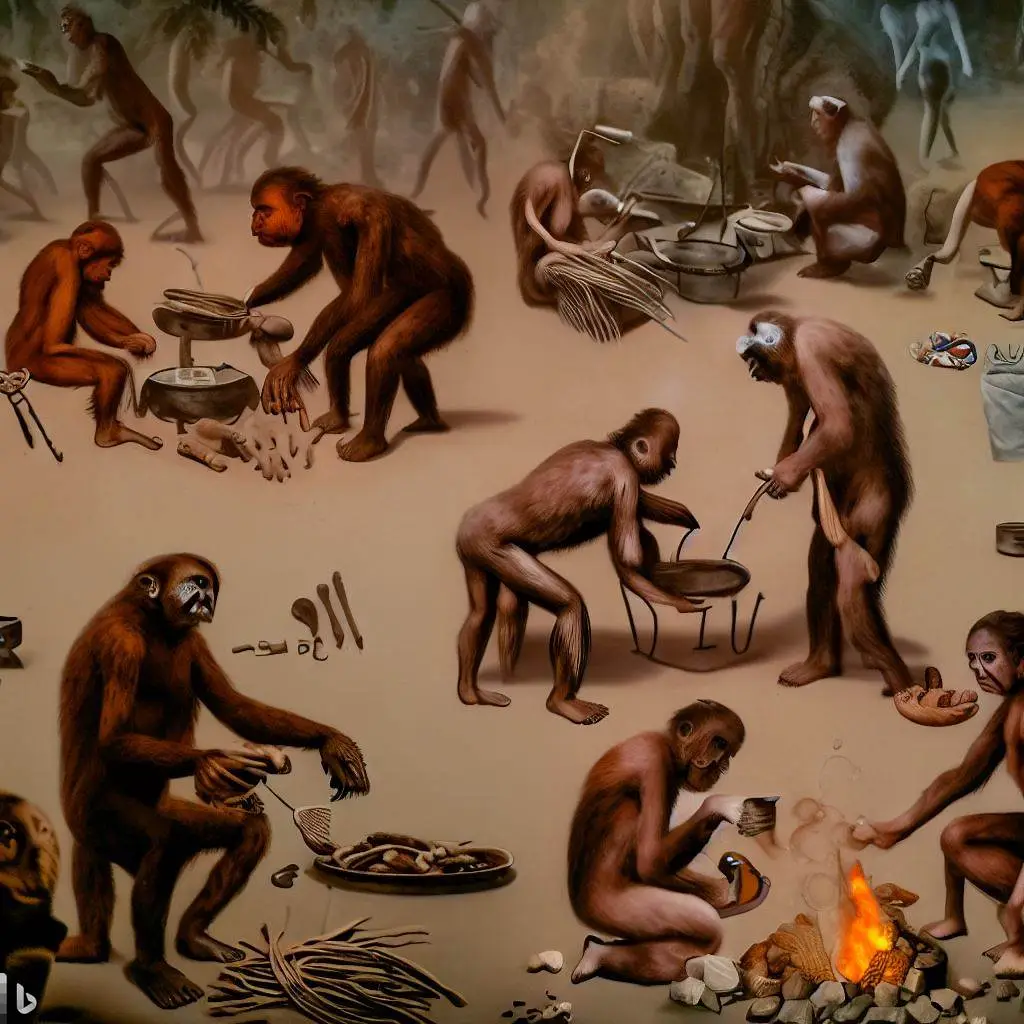
An image portraying Homo habilis individuals in a social context, engaging in activities such as toolmaking, food sharing, and communal living, depicting their basic social interactions.
The emergence of Homo habilis represents a crucial step in human evolution, as it demonstrates the transformative power of technology and innovation. The ability to create and utilize tools not only increased survival rates but also paved the way for further advancements in our ancestral lineage.
By studying Homo habilis, we gain insights into the development of our cognitive abilities, the importance of adaptability, and the role of technology in shaping our species. Their legacy serves as a testament to the profound impact that our ancestors had on the course of human history.
As we move forward in the journey of human evolution, the next stage brings us face to face with Homo erectus, who continued to push the boundaries of our capabilities and embarked on new horizons.
Stage 3: Homo erectus - The Wanderers
In the vast expanse of time, a remarkable species emerged known as Homo erectus. This group of early humans inhabited the Earth from approximately 1.9 million to 143,000 years ago, making them one of the longest-surviving hominid species. Homo erectus, whose name means "upright man," left an indelible mark on our evolutionary history with their significant advancements in both physical attributes and cultural capabilities.
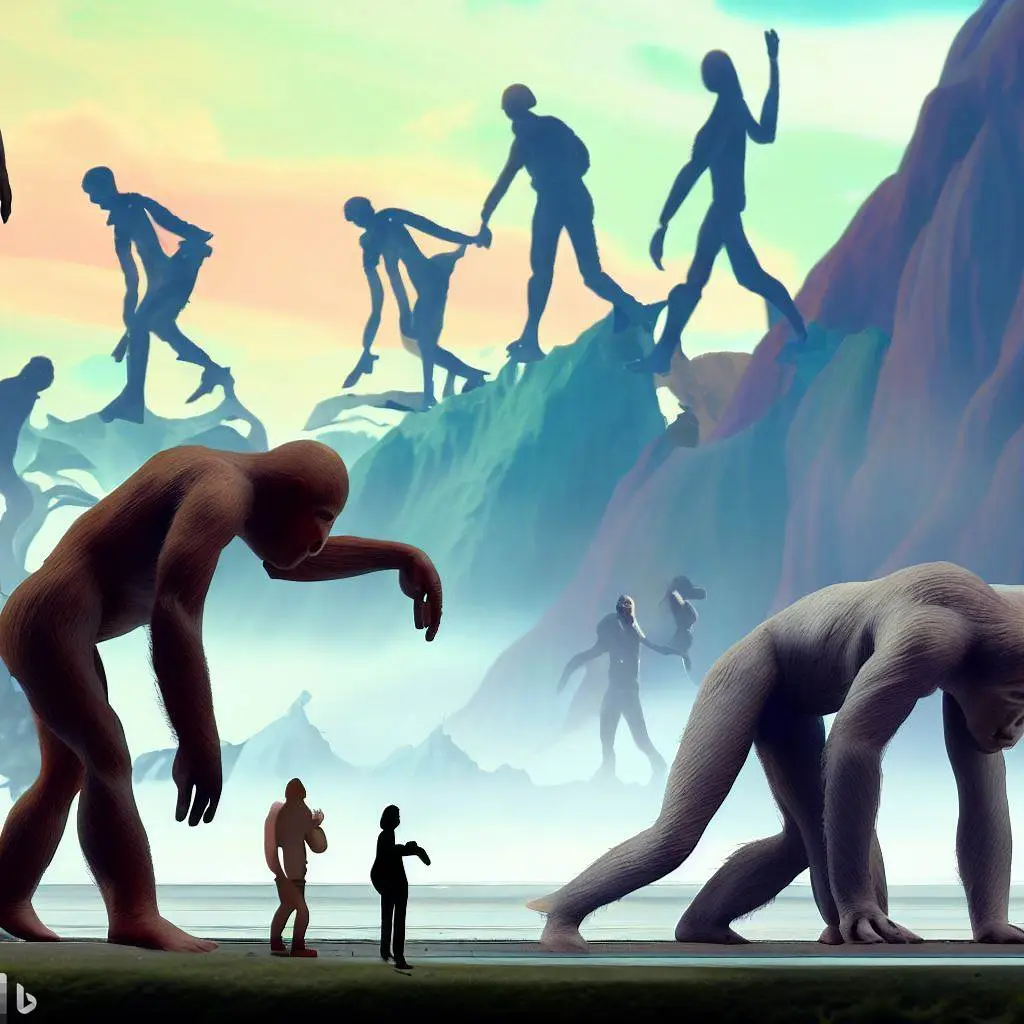
An artistic representation of Homo erectus individuals in different environments, showcasing their ability to adapt and explore diverse landscapes.
Homo erectus, distinguished by their upright posture and larger brain size compared to their predecessors, possessed physical adaptations that allowed them to thrive in various environments. Their relatively modern body proportions and long legs were advantageous for long-distance walking and running, enabling them to cover vast distances in search of food, shelter, and new territories.
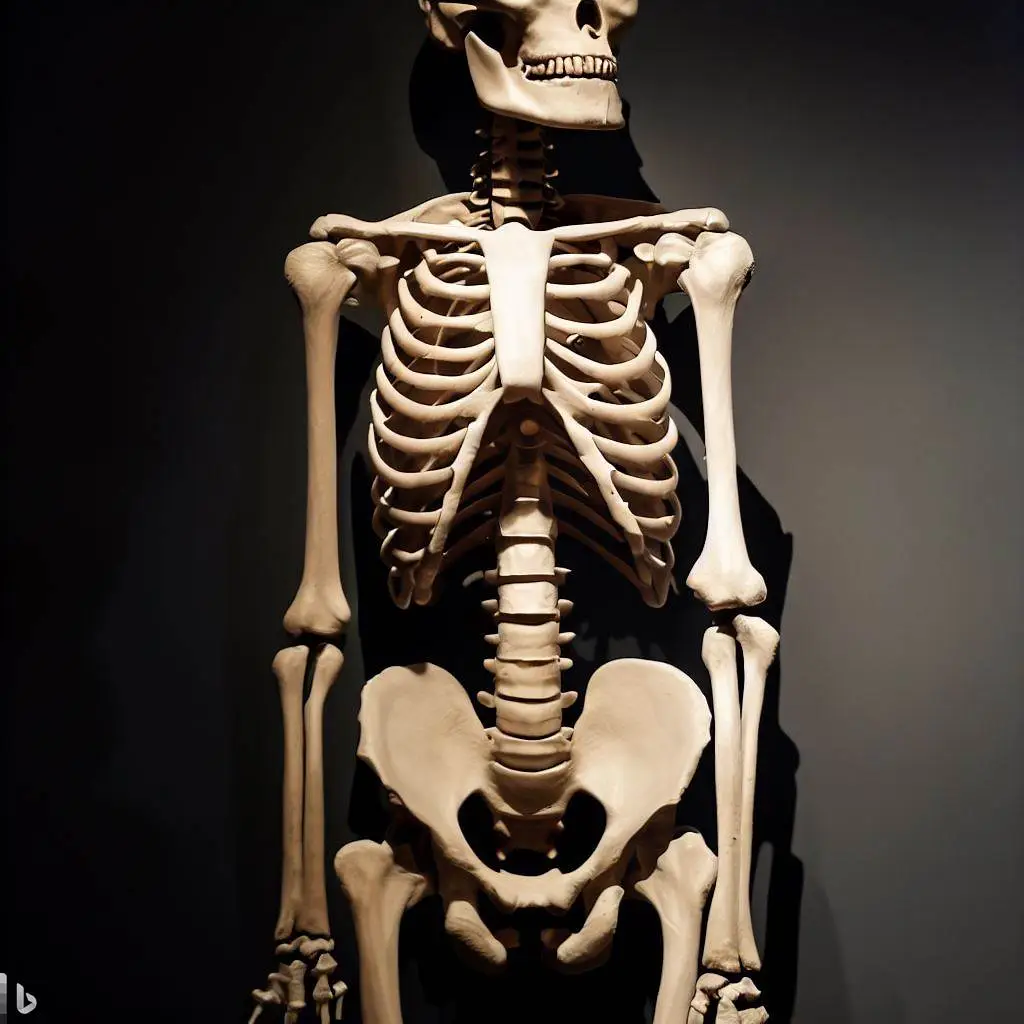
An image depicting the skeletal structure of Homo erectus, highlighting their unique physical features, such as their upright posture, long legs, and robust build.
One of the notable achievements of Homo erectus was their mastery of fire. Evidence suggests that they were the first human species to control and utilize fire, which revolutionized their way of life. Fire provided warmth, protection from predators, and the ability to cook food, making it a crucial element in their survival toolkit.

An illustration or depiction of Homo erectus individuals tending to a fire, highlighting the importance of fire in their daily lives.
Homo erectus exhibited a level of cultural sophistication that included the development of more complex tools and hunting strategies. They created hand axes, which were larger and more refined than the tools of their predecessors. These versatile implements served multiple purposes, such as butchering animals, digging, and possibly even as weapons for defense and hunting.

An image showcasing the diverse range of hand axes created by Homo erectus, highlighting their craftsmanship and functionality.
The expansion and exploration of new territories were significant characteristics of Homo erectus. Fossil evidence reveals their presence in various regions, including Africa, Asia, and Europe. Their ability to adapt to different climates and environments allowed them to colonize diverse landscapes and thrive in a wide range of ecological settings.
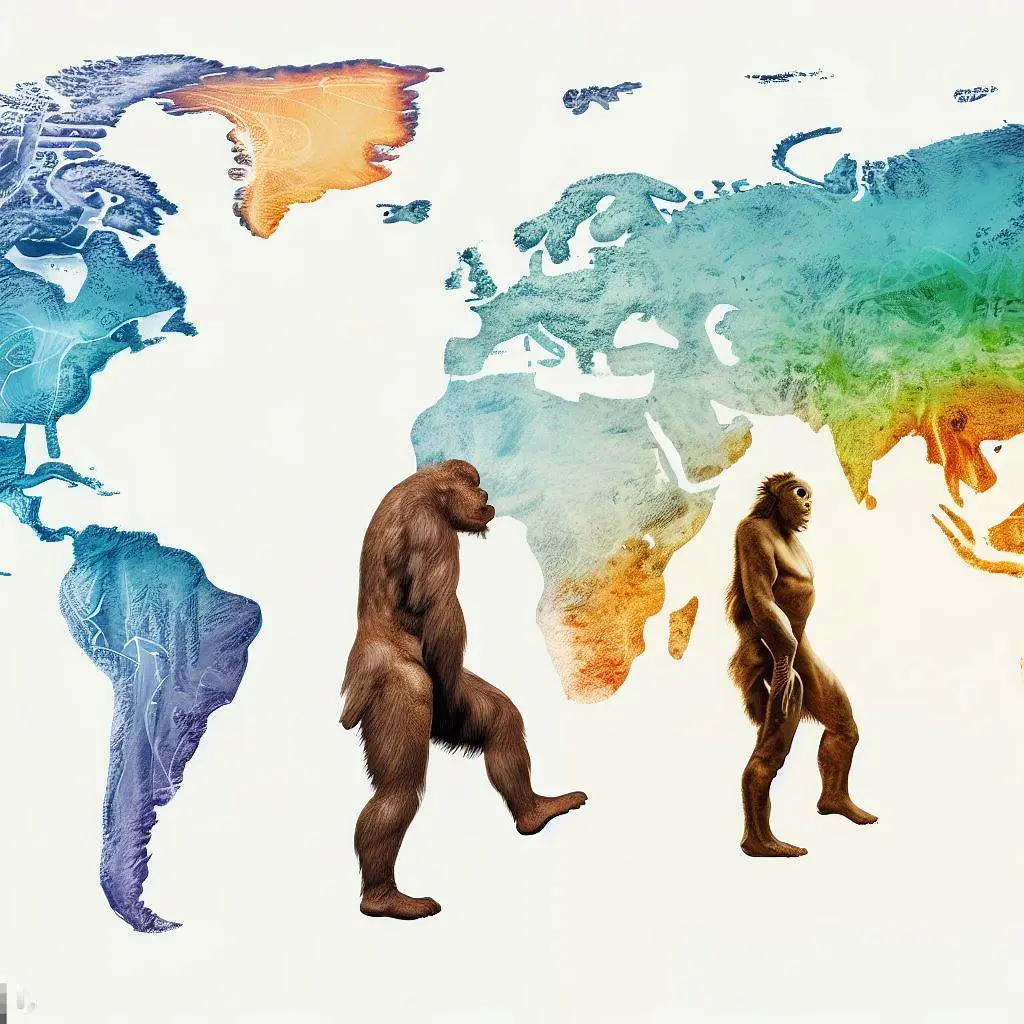
A map illustrating the dispersal of Homo erectus across different continents, showcasing the regions they inhabited and the routes they likely took during their migration.
Socially, Homo erectus is believed to have lived in small groups or communities, fostering cooperation and collective survival strategies. They likely engaged in communal activities such as hunting, gathering, and sharing resources, which strengthened their bonds and facilitated their adaptation to different environments.

An artistic representation of Homo erectus individuals engaging in group activities, such as hunting or food sharing, highlighting their social dynamics and cooperation.
The legacy of Homo erectus is a testament to their ability to adapt, innovate, and explore. Their advancements in toolmaking, mastery of fire, and the colonization of diverse landscapes set the stage for future human developments and laid the foundation for our continued evolution.
As we delve deeper into the story of human evolution, the next stage introduces us to our close relatives, the Neanderthals. Their fascinating tale and interactions with Homo sapiens reveal the complexities of our shared lineage and the incredible diversity that existed within the human family tree.
Stage 4: Neanderthals - Our Close Relatives
The story of human evolution takes an intriguing turn with the emergence of the Neanderthals. Neanderthals, or Homo neanderthalensis, existed from approximately 400,000 to 40,000 years ago and inhabited regions across Europe and parts of Western Asia. These remarkable beings shared a common ancestor with Homo sapiens and are considered our closest relatives in the hominid family tree.
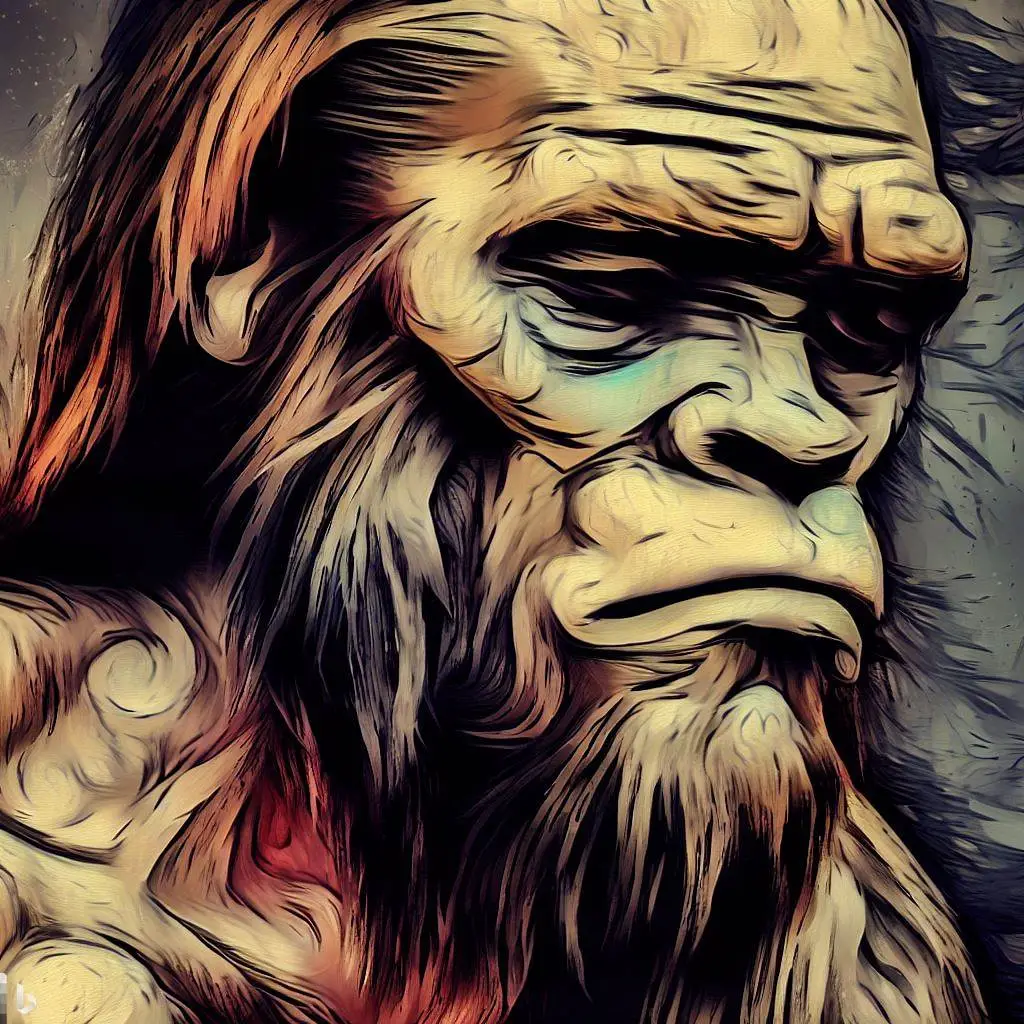
An artistic depiction of a Neanderthal individual, showcasing their distinct physical features such as a robust build, prominent brow ridges, and a receding forehead.
Neanderthals were well-adapted to the challenging environments in which they lived. Their physical characteristics, such as a robust build, stocky frame, and shorter stature compared to modern humans, reflected their adaptation to colder climates. These features allowed them to conserve body heat and withstand the harsh conditions of Ice Age Europe.
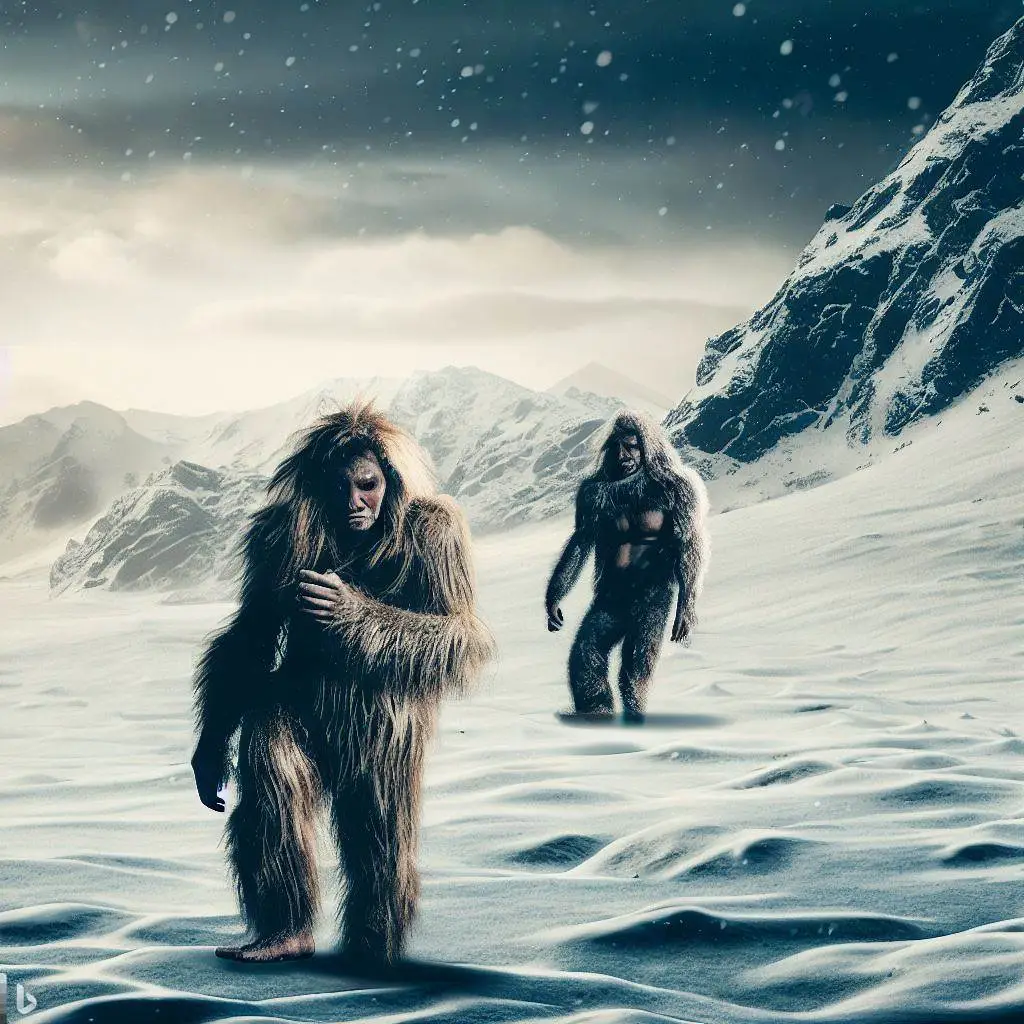
An image depicting Neanderthal individuals in a snowy landscape, emphasizing their physical adaptations for cold climates.
One of the defining traits of Neanderthals was their exceptional strength and physical prowess. Studies of their skeletal remains reveal signs of a physically demanding lifestyle, likely involving activities such as hunting large game and engaging in close combat with predators. Their muscular build and powerful physique were advantageous for survival in their challenging environments.
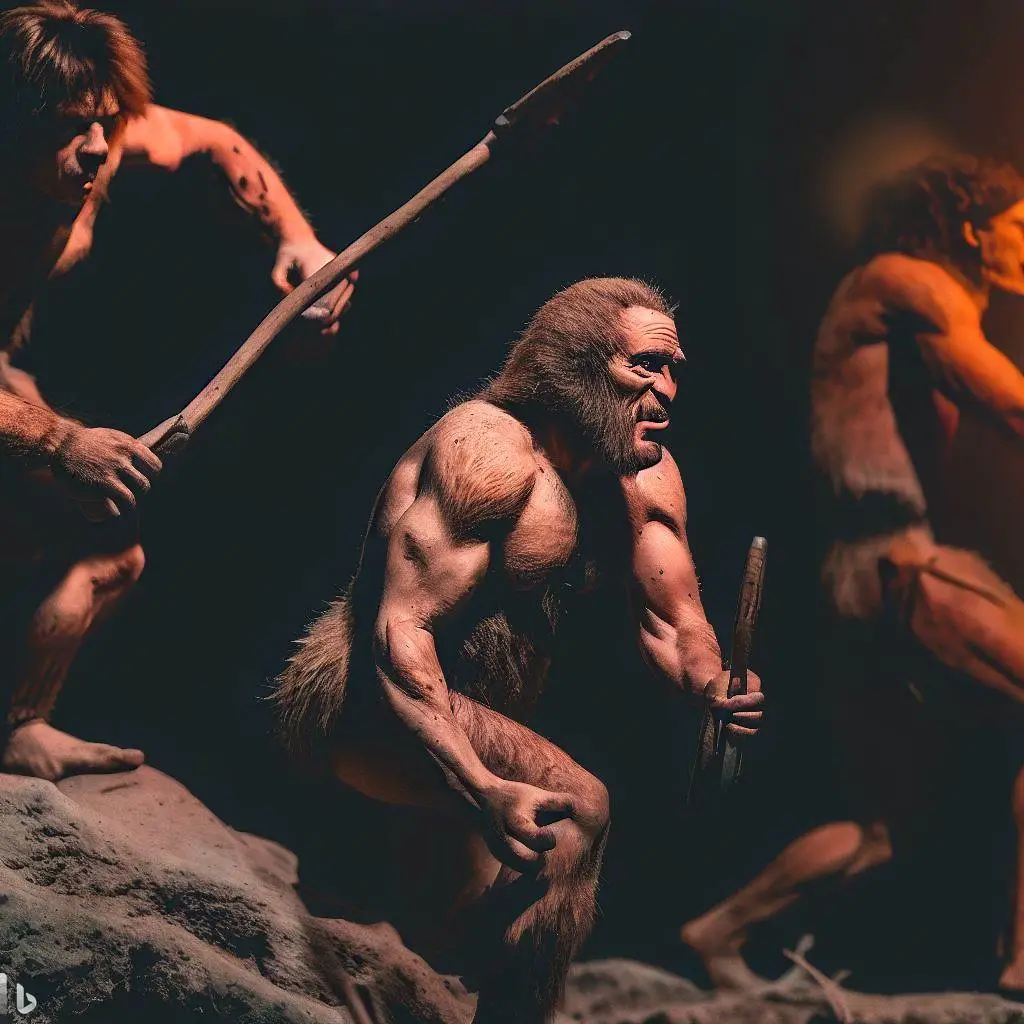
An illustration or reconstruction showing Neanderthal individuals engaged in hunting activities, highlighting their physical strength and hunting techniques.
Contrary to popular misconceptions, Neanderthals were not brutish and primitive beings. They possessed a sophisticated culture and displayed evidence of complex behaviors. Neanderthals created and used a wide range of tools, including hand axes, scrapers, and spear points. These tools enabled them to hunt, butcher animals, and process resources for their survival.
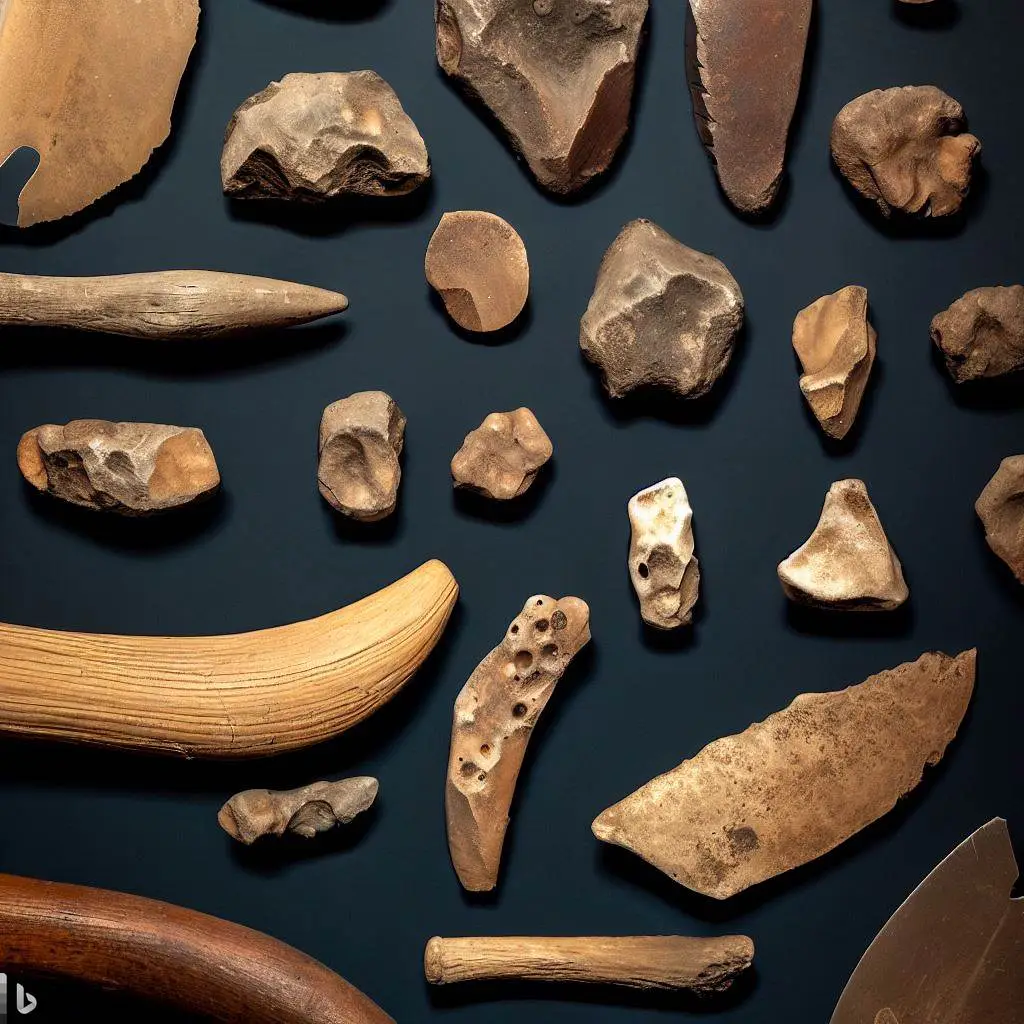
An image showcasing the diversity of Neanderthal tools, highlighting their craftsmanship and functional applications.
Neanderthals also exhibited a degree of symbolism and creativity. Archaeological discoveries have uncovered evidence of their artistic expression, such as cave paintings and the production of decorative items. These artistic endeavors not only provide insights into their cognitive abilities but also highlight their capacity for symbolic thinking and self-expression.
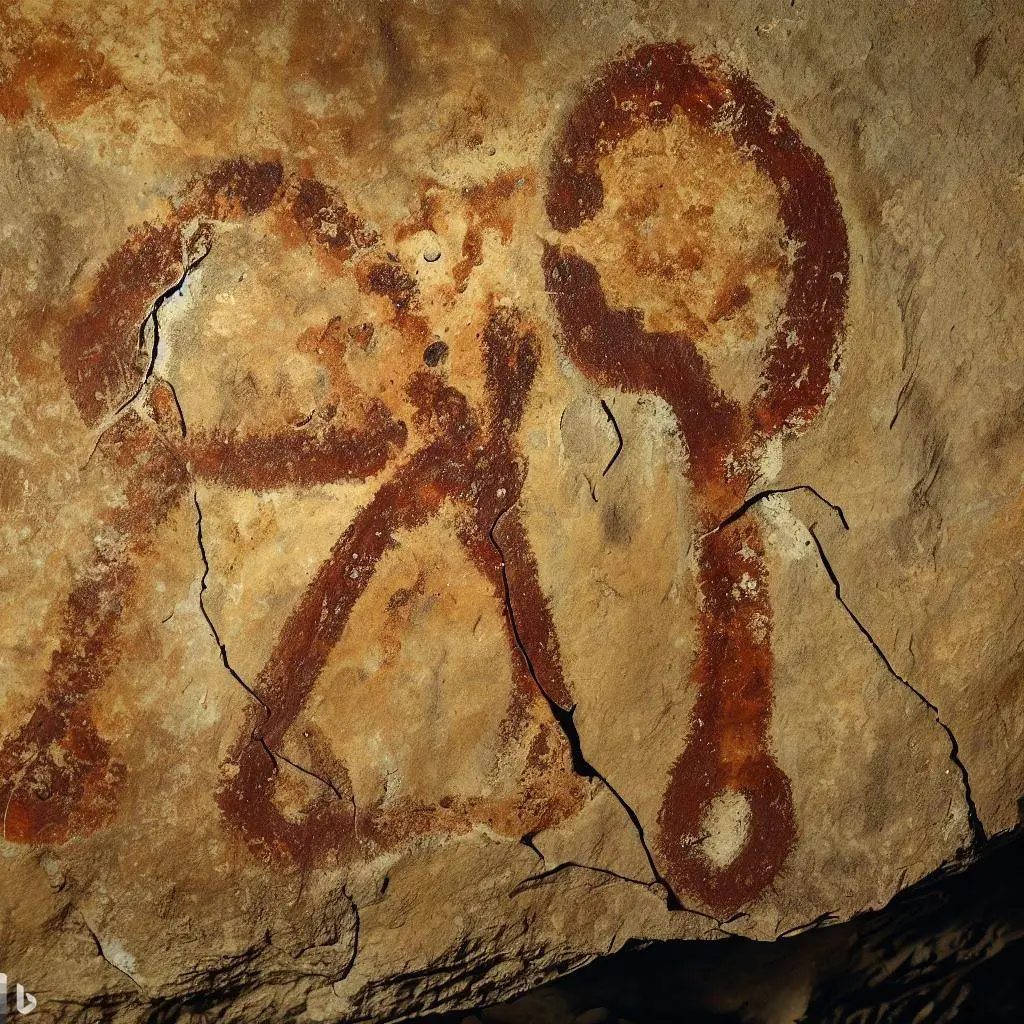
A depiction of Neanderthal cave art or personal adornments, demonstrating their artistic endeavors and symbolic expression.
An important aspect of Neanderthal history is their interactions with Homo sapiens, our own species. Genetic studies have revealed that Neanderthals and modern humans interbred, indicating some level of genetic exchange between the two groups. This interbreeding left a lasting imprint on the genetic makeup of modern humans, with individuals of non-African descent possessing traces of Neanderthal DNA.
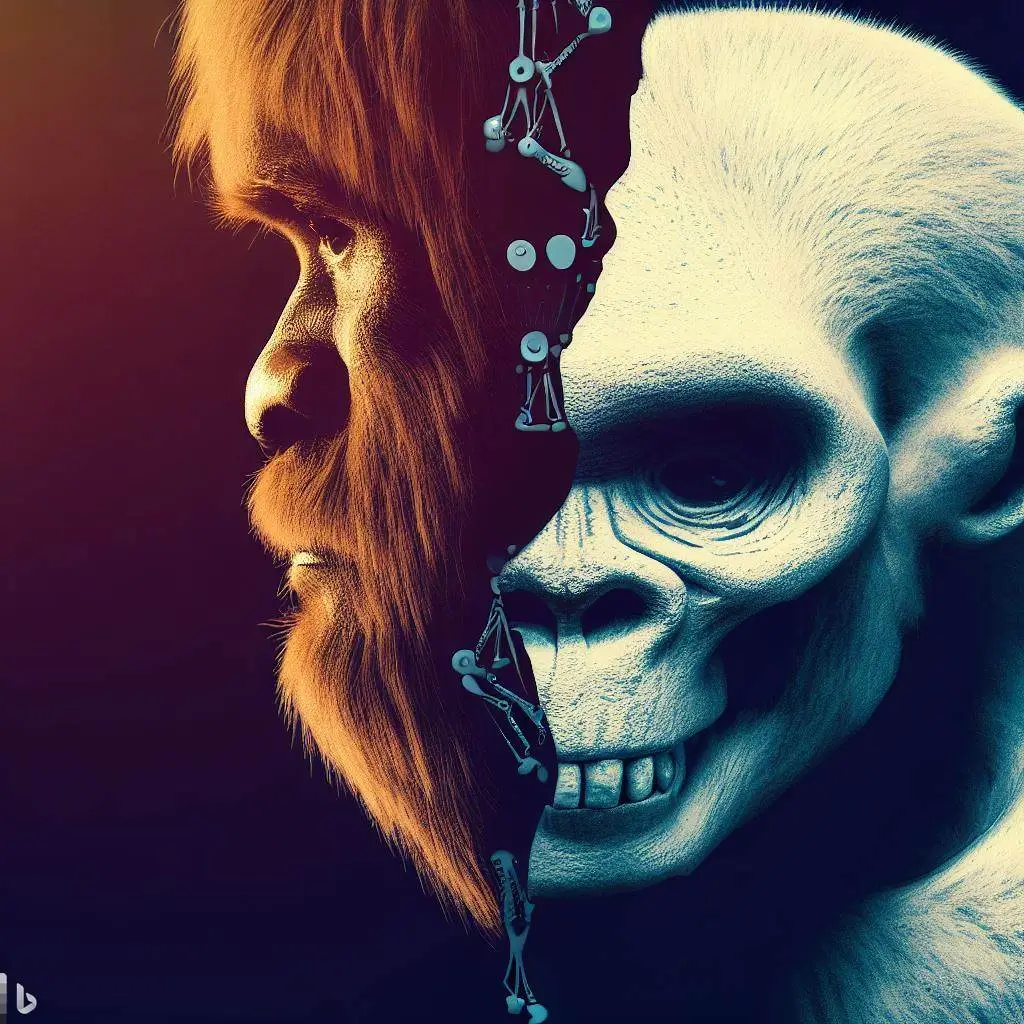
An artistic representation or diagram illustrating the genetic mixing between Neanderthals and Homo sapiens, emphasizing the genetic legacy in modern human populations.
Despite their remarkable adaptations and cultural achievements, Neanderthals eventually disappeared from the Earth. The exact reasons for their extinction remain a topic of scientific debate, with factors such as climate change, competition with Homo sapiens, or a combination of multiple factors potentially playing a role in their demise.
If Homo sapiens and Neanderthals coexist, why did they go extinct? - Quora
The story of Neanderthals provides us with a glimpse into the rich tapestry of human evolutionary history. Their existence and interactions with our own species underscore the complexities of our shared past and the remarkable diversity that once inhabited our planet. As we move forward in our journey through human evolution, the next stage brings us to the rise of Homo sapiens, our own remarkable species.
Stage 5: Homo sapiens - Modern Humans
As we delve deeper into the story of human evolution, we arrive at a pivotal stage: the emergence of Homo sapiens, our own species. Homo sapiens, or anatomically modern humans, first appeared in Africa around 300,000 years ago. They are the only surviving species of the genus Homo and have since populated nearly every corner of the globe. The rise of Homo sapiens marks a significant milestone in our evolutionary journey, characterized by remarkable achievements and advancements.
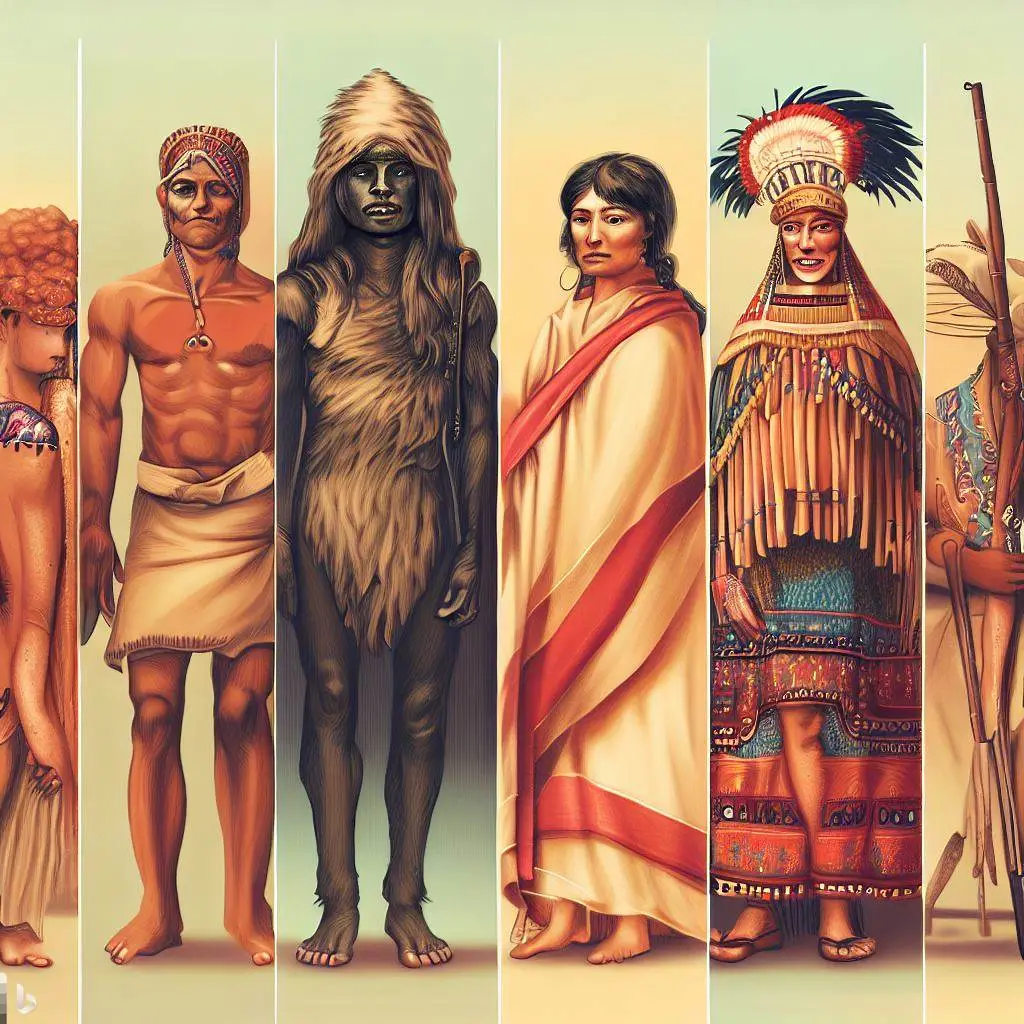
An artistic representation of Homo sapiens in different cultural settings, showcasing the diversity of our species in terms of physical appearance, clothing, and adornments.
Homo sapiens exhibited several key characteristics that set them apart from their predecessors. One defining feature is their high cognitive capacity, including advanced language skills and complex symbolic thinking. These cognitive abilities allowed Homo sapiens to communicate effectively, develop intricate social structures, and pass down knowledge from one generation to the next.

An image depicting Homo sapiens engaged in various forms of communication, such as oral storytelling, written language, and artistic expression.
The ability to innovate and adapt played a crucial role in the success of Homo sapiens. They developed an array of sophisticated tools and technologies, such as finely crafted stone blades, fishing implements, and specialized hunting tools. This increased efficiency in resource acquisition and utilization, enabling Homo sapiens to thrive in diverse environments.
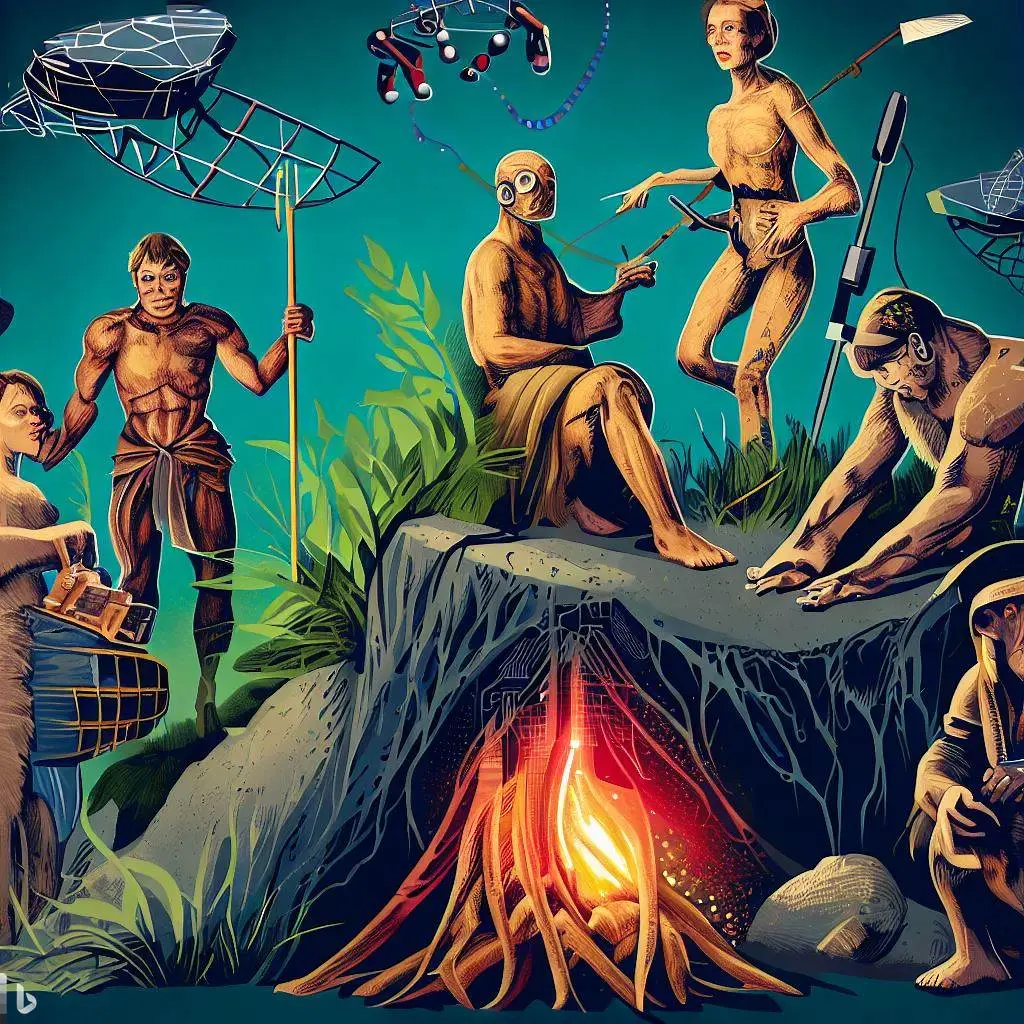
An illustration showcasing Homo sapiens using advanced tools and technologies for hunting, gathering, and resource management.
One of the most remarkable achievements of Homo sapiens is the development of art and symbolic expression. From cave paintings to intricate sculptures, early humans demonstrated their creative abilities and deep connection with the world around them. Art not only served as a means of communication but also expressed their beliefs, cultural practices, and narratives of the human experience.

A visual representation of cave art or ancient artifacts, illustrating the artistic expressions and symbolic significance of Homo sapiens.
The advancement of Homo sapiens was not limited to material culture but also extended to social and cultural aspects. They lived in complex societies characterized by diverse roles, hierarchies, and shared belief systems. These societies fostered cooperation, division of labor, and the development of rituals, ceremonies, and traditions.
The journey of Homo sapiens was marked by exploration and migration. Over time, they ventured out of Africa and spread across the globe, adapting to diverse environments, climates, and ecosystems. This expansion resulted in the colonization of new territories and the establishment of distinct regional cultures.
The remarkable success of Homo sapiens can be attributed to their ability to innovate, adapt, and cooperate. Their capacity for complex language, abstract thinking, and cultural transmission enabled them to develop technologies, navigate social complexities, and thrive in a wide range of environments.

An image showcasing Homo sapiens engaging in activities that reflect their cognitive abilities and cultural achievements, such as building complex structures, creating art, and practicing rituals.
As we reflect on the story of Homo sapiens, we recognize the tremendous impact our species has had on the planet and its ecosystems. From the earliest civilizations to the modern era, Homo sapiens continue to shape the world through scientific advancements, technological innovations, and cultural diversity.
Future Species: Embracing the Unknown
As we ponder the extraordinary journey of human evolution, our thoughts naturally gravitate toward the future of our species. While the path ahead remains uncertain, there are intriguing possibilities that may shape the course of our continued evolution. Let's explore some potential scenarios:
Genetic Advancements:
With the rapid progress in genetic engineering and biotechnology, future humans might possess enhanced traits and capabilities. Through gene editing technologies, inherited diseases could be eliminated, and resistance to various ailments strengthened. However, it is crucial to approach these advancements ethically, ensuring that they are used responsibly and for the benefit of all.

Illustration depicting humans with enhanced genetic traits, symbolizing the potential advancements in genetic engineering and biotechnology.
Technological Integration:
As we embrace the era of advanced technology, humans could potentially merge with artificial intelligence through brain-computer interfaces. This integration might grant us unparalleled cognitive abilities, augmenting our intelligence, memory, and problem-solving skills. However, the ethical implications surrounding privacy, autonomy, and the potential risks of such integration must be carefully considered.

Conceptual artwork representing the integration of human minds with advanced artificial intelligence through brain-computer interfaces.
Adaptation to Changing Environments:
The ever-evolving nature of our planet could necessitate adaptations to new environmental conditions. Rising sea levels, climate changes, and the possibility of space colonization may drive the future evolution of our species. Traits that facilitate survival in extreme temperatures, oxygen-depleted environments, or resource-scarce settings may emerge over time.

Visual representation of a future human settlement on a distant planet, highlighting our potential for adaptation to new environments.
Cultural and Social Transformations:
Human evolution is not solely dictated by biological changes but also by cultural and social factors. In the future, we might witness shifts in social structures, values, and norms, influencing the evolution of our species. Cooperation, global connectivity, and cultural diversity could shape our future path, fostering unity and understanding.

Artistic depiction showcasing the diverse cultural and social interactions that may influence the future evolution of our species.
Conclusion: Embracing the Ever-Changing Journey
The story of human evolution spans across millennia, encapsulating the triumphs, challenges, and mysteries of our existence. As we venture into the uncharted territory of the future, it is essential to approach the possibilities of human evolution with a sense of wonder, responsibility, and ethical awareness.
By nurturing our collective knowledge, embracing cultural diversity, and safeguarding the well-being of our planet, we can shape a future that respects our evolutionary heritage while embracing the potential for growth and transformation.
As we conclude this exploration of human evolution, let us remain curious, adaptable, and compassionate stewards of our species. The journey continues, inviting us to seek deeper understanding, inspire meaningful connections, and embark on a future that reflects the best of our evolving nature.
Together, let us honor our past, embrace the present, and step forward into the vast unknown, guided by the wisdom gained from our remarkable journey through time.
Thank you for accompanying us on this enlightening expedition through the tapestry of human evolution. May our collective curiosity continue to propel us toward greater understanding and a future where the wonders of our existence continue to unfold.




Add a Comment: